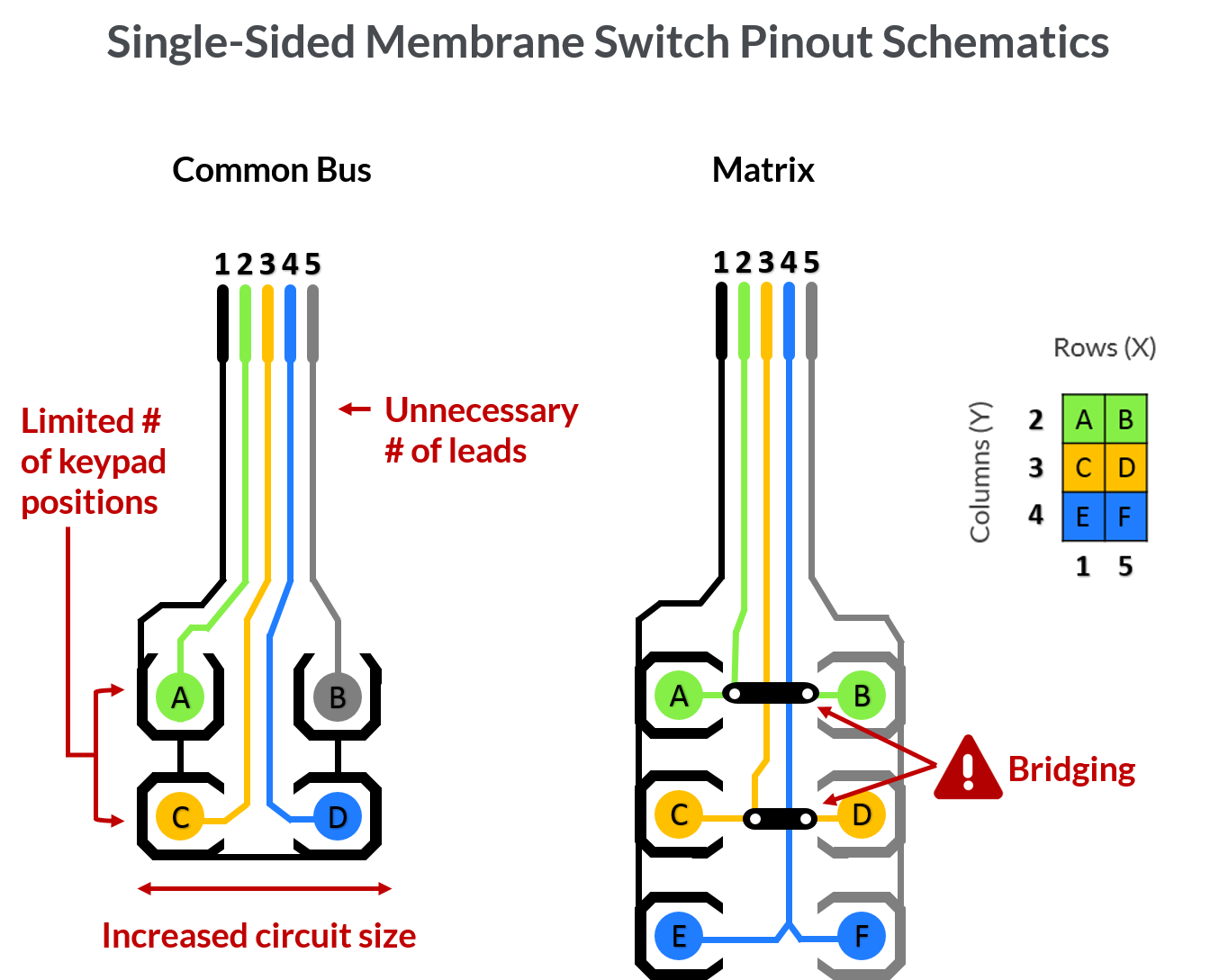Discover Various Sorts Of Membrane Switch Technologies for Your Demands
Discover Various Sorts Of Membrane Switch Technologies for Your Demands
Blog Article
Understanding the Functionality of Membrane Layer Changes for Interface Gadget
The capability of membrane switches represents a significant innovation in interface style, integrating efficiency with aesthetic versatility. These buttons run with a multi-layered framework that converts customer interactions into electric signals, enabling both portable formats and durability against ecological factors. As sectors progressively prioritize user experience, understanding the subtleties of membrane button technology becomes crucial. What implications do these developments hold for future applications, and just how might they redefine individual communications across different devices?
What Are Membrane Layer Switches?
Membrane layer switches are cutting-edge interface gadgets that promote user interaction with electronic devices. These flexible parts consist of several layers, including a graphic overlay, spacer, and a printed circuit layer. The style permits a seamless combination into different electronic gadgets, improving both the aesthetic and functional aspects of user interfaces.
Membrane switches are commonly used in a vast array of applications, from house devices to commercial equipment and medical devices. Their construction generally includes a slim profile, making them an ideal choice for portable styles. The tactile responses provided by these buttons can be crafted to satisfy particular user choices, making certain reliable interaction between the user and the tool.
Toughness is another considerable benefit of membrane layer switches, as they are resistant to dirt, moisture, and chemicals, which improves their lifespan sought after settings. Furthermore, these switches can be tailored in terms of form, size, and graphic layout, enabling for branding and user-specific features. On the whole, membrane switches over represent a practical remedy for improving user experience in digital devices, incorporating functionality with visual charm in a reliable way.
How Membrane Switches Over Job
Operating on a simple concept, membrane layer switches use a split building to sign up individual input successfully. Each switch contains several layers, consisting of a printed circuit layer, a spacer layer, and a leading visuals layer, which are designed to work together flawlessly. When a user presses the top layer, it presses the spacer layer, bringing the conductive elements of the circuit layer right into contact with each various other.
This call creates a closed circuit, signifying the device to perform a details function. The design enables numerous configurations, including responsive comments, which can boost the customer experience by providing a physical feeling upon activation. The products made use of in membrane layer buttons often include versatile substratums, such as polyester or polycarbonate, which make certain resilience and durability versus deterioration.

Key Advantages of Membrane Switches

An additional considerable benefit is their compactness. Membrane buttons are thin and light-weight, which allows producers to conserve space in their gadgets without compromising capability. This function is particularly useful in applications where weight and quantity are crucial considerations.
Furthermore, membrane layer switches are immune to dust, wetness, and chemicals, enhancing their longevity. This durability expands their lifespan and minimizes the demand for regular substitutes, causing expense financial savings in time.
In addition, the tactile comments provided by membrane buttons can be optimized to improve individual communication. They can include features such as increased switches or distinct clicks, improving functionality and customer experience.
Applications Across Industries
Interface gadgets making use of membrane switches are common in a vast variety of sectors, showcasing their adaptability and capability. Membrane Switch. In the medical industry, membrane layer buttons are integral to tools such as analysis equipment and client tracking systems, where their longevity and ease of cleaning are important for preserving health requirements. In the auto sector, these buttons are used in control panel controls and infotainment systems, providing a smooth and modern-day user interface for individuals.
Furthermore, the customer electronics industry benefits from membrane layer switches in home appliances and handheld devices, where compact design and user-friendly interfaces boost customer experience. Industrial applications additionally leverage membrane layer changes for control board in machinery and automation systems, emphasizing their robustness and resistance to rough settings.
In the aerospace and protection markets, membrane switches are utilized in cockpit controls and equipment, where integrity and efficiency under extreme conditions are extremely click reference important. In addition, the video gaming industry significantly integrates membrane buttons in controllers and gallery equipments, adding to an interesting customer experience. In general, the versatility of membrane switches over allows their widespread usage across countless markets, see this underscoring their value in contemporary user interface layout.
Future Trends in Membrane Layer Change Modern Technology

Additionally, using innovative products, such as polycarbonate and polyester movies, is anticipated to climb, offering enhanced longevity and resistance to environmental stress factors. These products add to the overall durability of membrane layer buttons, making them suitable for harsher industrial applications.
Additionally, the incorporation of wise innovation, consisting of IoT connection, will enable membrane switches to communicate with various other gadgets and systems, promoting a more interactive individual experience. This pattern lines up with the expanding demand for wise devices throughout various fields, from medical care to consumer electronics.
Last but not least, personalization choices are expected to expand, permitting manufacturers to produce bespoke options tailored to details customer demands and choices. These growths will certainly place membrane layer switches as important elements in the evolution of user interface technology.
Verdict
To conclude, membrane layer switches represent an essential improvement in individual interface modern technology, offering a trustworthy and functional remedy useful reference for varied digital applications. Their layered building and construction promotes portable style, while features such as tactile comments enhance user communication. The durability against ecological factors better strengthens their energy across multiple markets. As advancements in material scientific research and touch sensing innovations continue, the capability and applicability of membrane layer switches are anticipated to increase, reinforcing their importance in modern electronic devices.
Report this page